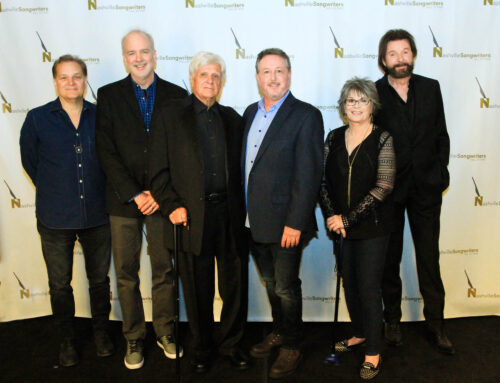CRS 2011 Research Study Finds State of Country Music Healthy, New Media Engagement Growing
Country Radio still king for consumers, new music discovery
The results of the CRB Country radio research study presented recently at Country Radio Seminar 2011 in Nashville. The comprehensive study was sponsored through a partnership between Country Radio Broadcasters, Inc. and the Country Music Association and was conducted by North Carolina-based media research firm Coleman Insights. You can review the actual study here.
Coleman Insights polled 5,000 country radio listeners, or “partisans,” regarding their consumption habits and the state of Country Music in general. The list of partisans was obtained from twelve country music stations in in Atlanta, Austin, Baltimore, Charlotte, Minneapolis, Philadelphia, Phoenix, Portland, Salt Lake City, Seattle, Tampa and Washington, D.C. In addition, 171 radio industry professionals were also polled to gauge their insight and perceptions about the country format versus those derived fro the consumer survey. The study surveyed a sample of 12- to 64-year-old P1 Country radio listeners across the U.S. and their usage of new media devices, including social media websites, smartphone applications and radio station and artist websites. Participants in th e study were polled between Feb. 7-18, 2011 via email and online questionnaires.
e study were polled between Feb. 7-18, 2011 via email and online questionnaires.
The “big picture” findings from the study, Coleman Insights, concluded that consumers perceived the overall state of country music as significantly more positive than the professionals in the industry did. Additionally, radio is the medium which makes consumers feel “most connected” to Country Music and remains the most consistent means of new music discovery for them. New media usage – use of Internet streaming and social networking for example – continues to increase among all age demographics polled, showing growth patterns consistent with those in other formats. Some of the key findings reported in the study were as follows:
- The country music radio partisans polled are very satisfied with what they hear on their favorite country stations and are happier than ever with the choices available for country listening.
- Their listening momentum remains very strong, as 83% of those polled perceive they are “listening more” to country radio now as compared to a year ago.
- Those polled perceive that “country music is better” (51%), that they are “listening more to radio” in general (45%), that country radio is “more family-friendly” (33%) and that their “country station has gotten better” (32%). The overwhelming majority of those polled (50%) believe that the “country music coming out today” is better than it was a few years ago by a five-to-one margin over those who think today’s country music “is worse” (10%).
- The top ten most popular artists of those evaluated by consumers are Brad Paisley, Tim McGraw, Lady Antebellum, Kenny Chesney, Zac Brown Band, George Strait, Jason Aldean, Carrie Underwood, Alan Jackson and Blake Shelton. Interestingly, Taylor Swift ranks in the bottom tier of the most popular artists, suggesting her large fan base lies predominantly outside the Country radio P1 audience.
Contrary to these findings among consumers, the industry professionals polled believed the following:
- that more than half of country music radio patrons are listening less to country radio than a year ago due to increased media choices and lack of time;
- that today’s country music has achieved equilibrium and is no better or worse than it was a couple of years ago; and
- that radio consumers are only moderately satisfied with the choices they have for country radio.
Significant data reported by the study concerned the use by country radio listeners of new technology and the wide array of options available to the consumer these days, which leads to the fragmentation of the target audience. A brief sampling of the statistics from the polled consumers indicates:
- Three-quarters own an Internet-connected PC or Mac;
- Two-thirds own a game console;
- Half own an iPod or mp3 player;
- Nearly half own a smartphone;
- Nearly two-thirds have watched country music videos on YouTube;
- Half are using Facebook;
- More than one-third have used Pandora streaming Internet radio.
In this regard, I found the following conclusion in the report to be very informative:
The industry has pretty accurate perceptions of the adoption and usage of new media and technology by
[country music radio patrons], with a few exceptions. One noteworthy exception is how the industry overestimates the importance of radio relative to other devices. The industry believes [country music radio patrons], , if forced to choose only one electronic or entertainment device, would choose AM/FM radio as the most important device. In fact, radio ranks a distant third behind Internet-connected portable computers and smartphones. This underscores how critical it is for Country radio and Country music to have a significant Internet and mobile media presence.Another misconception by the industry professionals is that the overwhelming majority of country music radio patrons wake up to a clock radio: in reality, country music radio patrons are just as likely to wake up to a smartphone, suggesting radio is already engaged in a battle for the nightstand. This has tremendous implications for morning radio listening and immediately suggests an opportunity for country radio to possibly preserve its wake-up utility by adapting to this phenomenon and creating wake-up apps that allow listeners to continue waking up to their favorite country stations through their smartphones. The study further reveals how the content country radio stations and country music artists post on Facebook and share on their websites is somewhat out of synch with the needs and desires of country music radio patrons . This suggests the industry is missing an opportunity and not fully capitalizing on the potential of these tools.
The industry also has a few misperceptions about Pandora streaming Internet radio as well. More than one-third of country music radio patrons have used Pandora and they have been using it for a longer period of time and more frequently than the industry believes. A key finding is that country music radio patrons already using Pandora say they are highly “likely” to use it in the car as it becomes available there. When Pandora exists side-by-side with AM/FM radio on the dashboard, current Pandora users are almost equally as likely to prefer Pandora as AM/FM radio, with 25% undecided. This forecasts a looming challenge to country radio from Pandora for in-car listening, a place that has long been radio’s almost-exclusive domain.
Lastly, the industry greatly underestimates interest among country music radio patrons in apps that would allow them to listen to Country radio stations on their smartphones or tablet computers (iPad, etc.).
The study was nonetheless seen as encouraging news for country radio and the country music industry. CRB Board member and Chair of the CMA Research Committee, Rusty Walker, said
I was extremely excited about the research data presented at CRS this year. As a result of the study’s innovative approach and its thorough questionnaire process, the findings by Coleman Insights will help all facets of the Country Music industry in better serving its customers, listeners and fans.
Perhaps the most encouraging aspect the study revealed was that, despite the explosion of new media and new technology, country radio is overwhelmingly perceived as the medium that most “connects” consumers to country music by its fans.
Coleman Insights President and COO Warren Kurtzman
This year’s study confirmed that the overall perception of Country Music by its core consumers was extremely positive, and the general health of Country radio is still strong. Listeners are continuing to find new means of consuming Country Music through emerging technologies, but this study seems to indicate they are not undermining Country radio’s connection with its listeners.
Findings from the study were presented March 3 at the CRB research panel during CRS 2011. Coleman Insights VPs Chris Ackerman and Sam Milkman presented the data, and CMA Market Research Director Greg Fuson announced the study as a piece of CMA’s continuing research to help identify and define the Country Music consumer.
For more information about the 2011 CRB Country Radio P1 listener research study, visit www.CRB.org or www.ColemanInsights.com





